#argentine composer
Text
youtube
Alberto Ginastera (1916-1983) : Popol Vuh, La Creación del Mundo Maya Op. 44
0:00 La Noche de los Tiempos (The Everlasting Night) 5:33 El Nacimiento de la Tierra (The Birth of the Earth) 10:05 El Despertar de la Naturaleza (Nature Awakes) 15:06 El Grito de la Creación (The Cry of the Creation) 15:31 La Gran Lluvia (The Great Rain) 18:47 La Ceremonia Mágica del Maiz (The Magic Ceremony of Indian Corn) 21:20 El Sol, la Luna y las Estrellas (The Sun, The Moon and The Stars) 22:55 El Amanecer de la Humanidad (The Dawn of Humankind)
Ben-Dor, BBC National Orchestra of Wales
6 notes
·
View notes
Video
youtube
«Tango reflecting the feelings of loving hearts» Argentine tango improvisation piano composer Victor Mikhailovich Anokhin
#youtube#@viktorjazz#composer viktor anokhin#improvisation music#music viktor mikhailovich anokhin#instrumental music#improvisation piano#instrumental#music#culture#dancing#latinamusic#musicvideo#romantic piano#romantic music#music of love#musiclove#pianolove#argentine tango
0 notes
Note
For the celebartion blurbs, maybe 22 with Enzo?(If you write for him?)
The game gave me like 5 heart attacks😭
crazy sexy dream girl ★
pairing: enzo fernandez x reader
req: scenario 22 (“kisses to keep your lover quiet during sex”)
note: making me write for an argentine man is crazy icl but i love enzo so here u go
now playing crazy sexy dream girl by lolo zouaï...
smut under the cut, minors dni!!
enzo's intentions were clear as day from the way his hand kept creeping up your thigh during dinner. you tried your best to keep a composed face in front of enzo's parents while they cut his birthday cake.
he took his teasing past the threshold of his childhood bedroom, still filled with dusty football posters.
when his fingers finally moved past your panties, he let his fingers brush against where you needed him the most.
"please enzo."
"please what? use your words hermosa." of course, enzo knew exactly what you needed from him but where was the fun in giving you what you wanted right away?
"touch me please." enzo felt his blood rush to his cock from the sound of your wrecked voice.
once he slipped two of his fingers in you. the movement of his digits put you in a haze, your mind was filled with thoughts of enzo, so much that you totally forgot about his family still downstairs.
he brought your lips together, swallowing your moans instead of letting them escape for his family to hear.
his lips moving against yours shared the full extent of his love and lust for you as his fingers worked inside of you to bring you to your first orgasm of the night. he grounded your hips to the mattress when he felt you move against him from the overstimulation.
"don't run away, i'm far from done with you princesa."
#can u tell i don't write smut often#hope u like it xx#enzo fernandez#enzo fernandez x reader#enzo fernandez fluff#enzo fernandez smut#enzo fernandez blurb#enzo fernandez fanfic#enzo fernandez one shot#enzo fernandez imagine#football one shot#football fanfic#football fluff#football imagine#football x reader#footballer imagine#football blurb#football smut
59 notes
·
View notes
Text





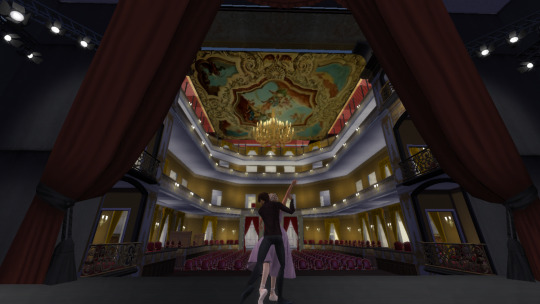
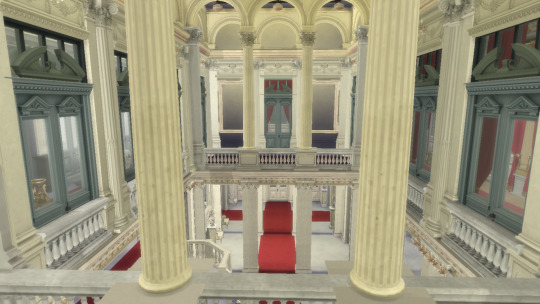
Colon Theatre
The Teatro Colón in Buenos Aires is one of the most important opera houses in the world. Its rich and prestigious history, as well as its exceptional acoustic and architectural conditions, place it on par with theaters such as La Scala in Milan, the Paris Opera, the Vienna State Opera, Covent Garden in London, and the Metropolitan Opera in New York.
In its first location, the Teatro Colón operated from 1857 to 1888 when it was closed for the construction of a new venue. The new theater was inaugurated on May 25, 1908, with a performance of Aida. Initially, the Colón hired foreign companies for its seasons, but starting in 1925, it had its own resident companies - Orchestra, Ballet, and Choir - as well as production workshops. This allowed the theater, by the 1930s, to organize its own seasons funded by the city's budget. Since then, the Teatro Colón has been defined as a seasonal theater or "stagione," capable of fully producing an entire production thanks to the professionalism of its specialized technical staff.
Throughout its history, no significant artist of the 20th century has failed to set foot on its stage. It is enough to mention singers such as Enrico Caruso, Claudia Muzio, Maria Callas, Régine Crespin, Birgit Nilsson, Plácido Domingo, Luciano Pavarotti, and dancers like Vaslav Nijinsky, Margot Fonteyn, Maia Plisetskaya, Rudolf Nureyev, and Mikhail Baryshnikov. Esteemed conductors such as Arturo Toscanini, Herbert von Karajan, Héctor Panizza, and Ferdinand Leitner, among many others, have also graced the theater. It is also common for composers, following the tradition initiated by Richard Strauss, Camille Saint-Saëns, Pietro Mascagni, and Ottorino Respighi, to come to the Teatro Colón to conduct or supervise the premieres of their own works.
Several top-notch maestros have worked consistently here, achieving high artistic goals. They include Erich Kleiber, Fritz Busch, stage directors like Margarita Wallmann or Ernst Poettgen, dance masters like Bronislava Nijinska or Tamara Grigorieva, and choral directors like Romano Gandolfi or Tullio Boni. Not to mention the numerous instrumental soloists, symphony orchestras, and chamber ensembles that have offered unforgettable performances on this stage throughout over a hundred years of sustained activity.
Finally, since 2010, the Teatro Colón has been showcased in a restored building, resplendent in all its original splendor, providing a distinguished setting for its presentations. For all these reasons, the Teatro Colón is a source of pride for Argentine culture and a center of reference for opera, dance, and classical music worldwide.
__________________________________________________________
You will need a 64x64 lot and the usual CC from TheJim, Felixandre, Harrie, Sverinka, SYB, Aggressivekittty, and other marvelous creators!
DOWNLOAD TRAY: https://www.patreon.com/user?u=75230453
(free to play 7/17)


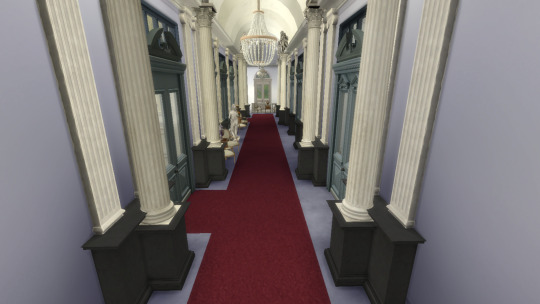



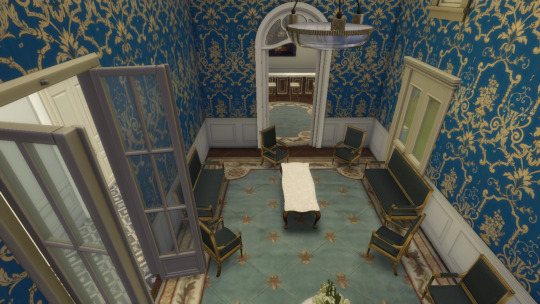
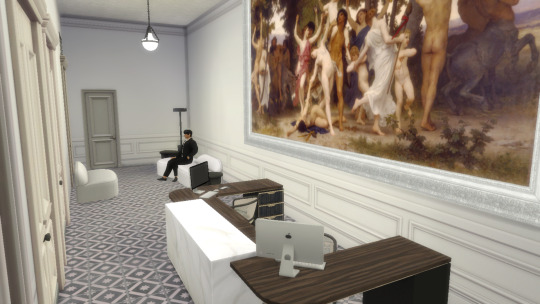




#sims 4 architecture#sims 4 build#sims4palace#sims 4 screenshots#sims4#sims4play#sims 4 historical#sims4building#sims 4 royalty#sims4frencharchitecture
73 notes
·
View notes
Text
Today's translation #631
Go Yuri!!! Go official fanbook, Tominaga Keisuke's comment
Almavivo
This was supposed to be "a passionate program, that is 180 degrees opposite to the cool and composed character of Seung Gil", so I challenged myself to produce Latin sound. However, as Yuuri's SP 'On love ~Eros~' is also Latin, I made sure not to make the two too similar to each other. Yuuri's music is more European Latin + Argentine style, whereas in Seung Gil music, my aim was a hot sound that is more close to the Equator, more Central and South America feel, like salsa or mambo for example. Matsushiba-kun told me that he had never composed a Latin or mambo before, but he was able to balance it very well and write music that was exactly like what I had in mind. The trumpet solo in the intro is performed by a veteran trumpeter, Nishimura Kouji - his phrases, that sound like singing, and balance of strength are amazing and the solo turned out to have a very good vibe.
13 notes
·
View notes
Text
Louis Tomlinson: “Returning as a soloist to the Vélez stadium makes me feel very proud”
The singer spoke with Teleshow about his upcoming presentation and his new album “Faith In The Future”
Louis Tomlinson expresses himself with enormous devotion to the public, while a crowd of young people continue shouting his name with admiration at the door of the hotel, waiting for Louis to come out to greet them and later it will happen, and to the surprise of all his fans. “ I am very lucky to have this special relationship, that is why I am here, for them. I'm here playing a concert like the one I'm going to play at and it's like a kind of codependency between them and me. The Argentine public has a lot of passion and energy. In fact, when we plan the tour, which we do perhaps a year in advance, one of the places that I already know the energy is going to sprout is in Argentina"
Louis Tomlinson belonged to One Direction , and they achieved one of the most brilliant pop successes of the last 20 years, a phenomenon that began in a television program and from there they began an ascending career that led them to success in the world. The story begins in the broadcast of the singing reality show The
The artist, born in Doncaster, England, in 1991, began his career in music as one of the members of the successful boy band. Tomlinson stood out in the group, for his unique voice, personality and his charisma, which made him a favorite of the Argentine directioners . Louis decided to embark on his own musical path. He released his debut album, “Walls,” which includes heart-touching songs like “We Made It” and “Don't Let It Break Your Heart,” proving that he is very talented as a solo artist and has been able to achieve something very difficult. , build your own sound.
He arrived in Argentina for a few hours to tell the press and his followers what the new show will be like. The visit was very short but it was enough for her to tour the Vélez stadium where she will perform in the month of May, and talk with Teleshow.
His faith in the future...
“As always, I was inclined to see the glass as half full in general . There are days that are more difficult than others, obviously, but optimism always helped me take the steps I had to take forward. My mom was very optimistic. She always encouraged me to be positive and see the positive side of life. That is why her work is called “Faith, in the future.”
Louis had a very strong relationship with his mother, he composed the song 'Two of us' for her, the lyrics are dedicated entirely to his mother. In an interview Tomlinson revealed that it was a way to vent, “She was my biggest supporter in many ways, whenever I needed advice she was the first person I called. I miss her very much, but she is no longer suffering” he ended up revealing after the death of his mother.
Before talking to the press, he visited the stadium where he once sang with the boy band, and this will be his first time as a soloist. “It felt really amazing. For a long time I didn't think I was going to be able to play in venues as big as I had been able to play with One Direction , because they were obviously a very, very popular band. So being able to go back there as a soloist makes me feel proud of myself and also of the fans and what we have created together”
15 notes
·
View notes
Text

[Translated from Spanish]
Louis Tomlinson expresses himself with enormous devotion to the public, while a crowd of young people at the door of the hotel continue to shout his name with admiration, waiting for Louis to go out to greet them and later it will happen, and to the surprise of all his fans. "I'm very lucky to have this very special relationship, that's why I'm here, for them. I'm here playing at a concert like the one I'm going to play and it's like a kind of codependency between them and me. A lot of passion, energy the Argentine public has. In fact, when we plan the tour, which we do it perhaps a year in advance, one of the places that I already know that the energy will sprout is in Argentina."
Louis Tomlinson belonged to One Direction, and they reaped one of the most infectious pop hits of the last 20 years, a phenomenon that began in a television program and from there they began an upward career that led them to succeed world-wide. The story begins with the broadcast of the singing reality show The X Factor, where the members of the group, for those things of fate, decided to form a band, after making extensive auditions and also being expelled from the television format.
The artist was born in Doncaster, England, in 1991. He began his career in music as one of the members of the successful boy band. Tomlinson stood out in the group, for his unique voice, personality and charisma, which transformed him into a favorite of the Argentine Directioners. Louis decided to embark on his own musical path. He released his debut album, "Walls", which includes songs that touch the heart, such as "We Made It" and "Don't Let It Break Your Heart", demonstrating that he has a lot of talent as a soloist and that he has been able to achieve something very difficult, to build his own sound.
He arrived in Argentina for a few hours to tell the press and his followers what the new show will be like. The visit was very short but it was enough for him to visit the Vélez stadium where he will be presented in the month of May, and talk with Teleshow.
"As always, I was inclined to see the glass half full in general. There are days more difficult than others, obviously, but optimism always helped me take the steps I had to take forward. My mom was very optimistic. She always encouraged me to be positive and to see the positive side of life." That's why that's what her work is called, "Faith, in the future"
Louis had a very strong relationship with his mother, he composed the song 'Two of Us', the lyrics are entirely dedicated to his mother. In an interview Tomlinson revealed that it was a way to vent, "She was my greatest support in many aspects, whenever I needed advice, she was the first person I called. I really need her, but she's not suffering anymore," he ended up revealing after his mother's death.
Before talking to the press, he visited the stadium where he once sang with the boy band, and this will be his first time as a soloist. "It felt really incredible. For a long time I didn't think that I would be able to play in places as large as the ones I had managed to play with One Direction, because it was obviously a very, very popular band. So being able to go back there as a soloist makes me feel proud of myself and also of the fans and of what we have created together."
17 notes
·
View notes
Text


Él Mató a un Policía Motorizado or Él Mató is an Argentine Indie Rock band made in 2003.
The first song that Santiago composed was "Space Rock." After releasing their self-titled debut album in 2004, the band set out to make a trilogy of EPs dedicated, respectively, to birth, life and death.
Their most famous songs are "El tesoro", "La noche Eterna" and "Fuego", Propaganda below;
"Todas sus canciones suenan como el último día de verano cuando sabes que no vas a volver a ver a tu amigo que conociste ese verano y con el cual tuviste una relación pseudo-homoerotica."
"Posiblemente la mejor banda de rock argentino de los 2010s. Temazos tipo indie rock para cuando estás medio melancolique. Santi Motorizado es el cantante y bajista y es un tipazo."
"Una de las mejores bandas de rock indie de ahora"
---------------
Café Tacvba is a Mexican Alternative Rock made in 1989.
In addition to the commercial and critical success they have achieved, the group is recognized for its avant-garde cultural project which mixes rock and its usual themes with lyrics, stories and sounds extracted from Mexican popular culture, the latter thanks to the use in various songs. of instruments such as tololoche and jarana.Among the main awards obtained throughout his career, the Grammy and the Latin Grammy stand out.
Re achieved the gold record in Mexico for more than 40,000 copies sold, definitively putting the quartet on the Spanish rock map.
Theyve been on MTV their most famous songs are "Eres", "La ingrata" and "Aprovéchate". Propaganda Below;
"El Rubén es medio Joto, Re es una obra de arte y la mezcla entre folclore y rock es eximia" (????)]
"deben ser mi banda favorita mexicana, me encanta que se noten las influencias indígenas y populares y como se mezclan con influencias punk y urbanas 🔥"
#cafe tacvba#él mató#café tacvba#el mato a un policia motorizado#él mató a un policia motorizado#Latino rock tournament#round 1#polls
22 notes
·
View notes
Note
Can you pls write a small scenario or fic where leo calls ney pretty several times, and makes ney shy and blushy,

this ask has been dusting in my inbox for a while so i decided to finally answer it today... sorry for the wait! i wrote it right after i woke up, so i hope its good enough! (also, i meant for it to be tooth-rotting fluff but for some reason it developed into lowkey horny. my apologies.)
"Pretty"
There were many instances where Leo called Neymar pretty.
Like when he said his new pair of cleats looked good.
Or when he said his new hairstyle suited him,
Or when he joked about his clothing choices,
Or when he'd gaze at him, devouring him with his eyes, while Neymar was too busy directing his attention at something else.
In all of these circumstances, "Pretty, pretty, pretty, pretty," echoed in the back of his head.
But Leo was sure he said it at some point. He thought about it so many times– so it was impossible he'd been so careless not to say it out loud, right?
Well.
Leo wasn't known for his talking abilities.
But still– he really thought he said it out loud.
So he was surprised at the way Neymar's face flushed into the most beautiful hue he'd ever seen.
"Really? You think I'm pretty?" the brazilian looked at him sheepshfully, studying Leo's eyes to find any indication of a lie.
"What?" he looked at him, disbelief swaying in his eyes, "Of course. You look very pretty."
Neymar winced at the remark as if he received a punch to the face.
He tried forcing a smile, tried straightening his posture, but he only mustered a pitiful giggle and wave of hand. He looked like an utter mess.
Leo couldn't hold back a cheeky grin from tugging his lips up. "That's cute" he thought to himself, his own cheeks flushing wildly.
It was a sight to behold, two adult men acting like teenagers flirting for the first time.
But you couldn't blame either of them for that; Leo was always too stoic and bad with words, so anyone would turn into jelly if he looked at you like you're the most precious thing in the world and called you pretty. Not handsome, like friends call each other, but pretty.
And well– Neymar was really a sight to behold. He was both handsome and pretty– he was gorgeous, the most beautiful man Leo's ever seen. He looked even more beautiful in his natural state; shirtless and fresh from the shower, his long dark curls hypnotizing by the way they shone under the soft locker room light.
And his eyes. Leo almost lost himself in them. The way green waltzed on top of light brown, absolutely mesmerizing.
And his golden skin, richened by many long hours under the hot sun…
And his muscles. Neymar wasn't ripped– no, he was slim but defined. His arms, torso, thighs… Leo just couldn't look away. And as Neymar struggled to compose himself, Leo striked again.
"You're very pretty." he leaned in the younger one's direction, placing a hand on his thigh, "Really… Really pretty, Ney." his voice came out in a soft whisper, a hum from the back of his throat.
Neymar's eyes snapped to Leo's face.
His eyebrows were furrowed. His mouth slightly agape.
His eyes traced down Leo's face all the way to his lips. Leo felt himself turning to stone.
Neymar cracked a shy smirk, his expression easing as he placed his hand on top of Leo's. He got a hold of it, guiding it up his body, dangerously close to his crotch, to his stomach, to his chest, to his neck, to his cheek.
Maybe he was aware of how that affected Leo, because he sported the cheekiest, most delighted expression an embarrassed man could muster, after noticing how the argentine was left panting from feeling his body.
The brazilian turned to face him properly, propping his right leg on the bench while the left dangled on his side. Leo instinctively copied him.
"Say it again..." Neymar whispered, closing his eyes as he leaned in and put his forehead on his shoulder.
"Pretty. You're so pretty, Ney." Leo tripped over his words, answering as if he'd been commanded. The air was so heavy.
"...Again?" Neymar pleaded, squeezing Leo's hand.
"You're the prettiest I've ever seen…" Leo gulped, taking a deep breath, "Gorgeous… Stunning… Mesmerizing…" he brushed his thumb against his cheek.
Neymar backed out, breathing heavily. He bit his lower lip, – which took all of Leo's attention – and got up, grabbing his towel from the bench, throwing it over his shoulder.
"It's funny hearing that from you– Leo Messi just called me pretty." If it was possible, Neymar's face would be completely bright red.
Leo smiled sheepishly, rubbing his own thighs, "I'm just telling the truth." he looked up at the brazilian, noticing how his gaze lingered on his hands, "You're used to it though… You've been called pretty so many times. Don't be silly."
Neymar ran a hand down his stomach, "Yes." he hummed, looking anywhere but at Leo, "But it's different. It's you. And– you chose such a great time to say that, huh?" he gestured at his and Leo's half naked bodies.
"...It's you who's thinking too hard…" it was his turn to look away in shame, "Is there a right time to say that, anyways?" he looked up at Neymar.
He wasn't too sure if there was some kind of rule for when to call Neymar pretty.
"Uh–" apparently defeated, Neymar waved his hands around and turned away to leave, "Hum– No– Well– See you at practice tomorrow!!"
Well. If Neymar wasn't going to tell him the right time to call him pretty, Leo would have to find it by himself.
So he'd call him pretty at practice,
In the middle of matches,
In the locker room,
At important events,
Always whispering, muttering, as if it wasn't anything too important, as if it was trivial gossip.
Until Neymar got too fed up with it and slammed him against the wall, shutting him up in the best way he could.
Well.
Now, Leo would never forget to call Neymar pretty.
96 notes
·
View notes
Text
youtube
Carlos Guastavino (1912-2000) - Diez Cantos Populares for Piano (1974)
Steven Schwarz, piano
2 notes
·
View notes
Text
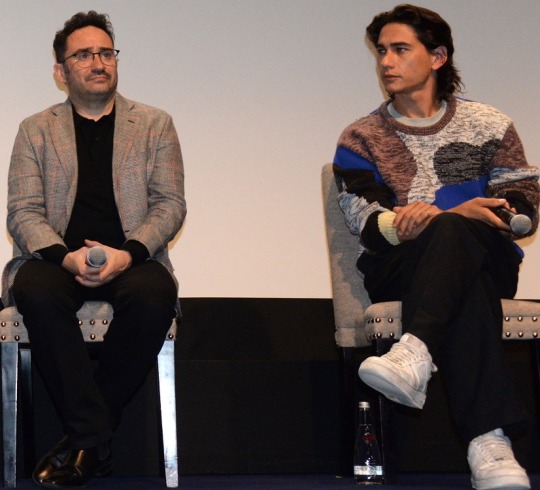
JA Bayona and Enzo Vogrincic
Society of the Snow is One of the Most Harrowing films of All Time – and Chilling As Well
by Brad Balfour
It’s an understatement to say that I’ve seen lots of films with varying degrees of frightening circumstances informing them. But Society of The Snow was one of the most harrowing – well deserving of award nominations, including the Oscar for Best International Feature. Though the film is fiction, it’s based on a true story and is done in such a way that you feel yourself actually experiencing the cold, anguish and pain as the story reveals itself.
In 1972, a Uruguayan rugby team chartered a flight to Chile, which catastrophically crashed on a glacier in the heart of the Andes. Of the 45 passengers on board, 29 survived the initial crash, although more would die from injury, disease, and an avalanche over the following weeks. Trapped in one of the most inaccessible and hostile environments on the planet, the survivors were forced to resort to survival cannibalism of those who had already died in order to stay alive. However, rather than turn against each other, the survivors drew upon the cooperative teamwork they learned through rugby, along with their spiritual faith, in order to escape the mountains. Only 16 of the 40 passengers ultimately survived.
Director JA Bayona discovered Pablo Vierci's 2009 account of the crash, La sociedad de la nieve, while conducting research for his 2012 film The Impossible. He bought the rights for the book when he finished filming that movie. Bayona recorded more than 100 hours of interviews with all of the living survivors. The cast is composed of Uruguayan and Argentine actors, most of whom are newcomers. The actors had contact with the survivors and the families of the victims.
Society of the Snow was the closing film at the 80th Venice International Film Festival, in an Out of Competition slot. It played in theaters in Uruguay, Spain and a limited run in the United States in December 2023, before streaming on Netflix in January 2024. Society of the Snow received positive reviews and won 12 awards including Best Picture and Best Director at the 38th Goya Awards and was nominated for Best International Feature Film, representing Spain, along with Best Makeup and Hairstyling at the 96th Academy Awards.
This Q&A with writer-director Bayona and star Enzo Vogrincic took place in front of an audience a few weeks before Oscar Night.
Society of the Snow was shot in sequence, which is so rare now. Also shooting on location with all the challenges. How important was it to you to have an Uruguayan voice to this film, this passion in your life for the last decade?
JA Bayona: This story is not only well-known in the Spanish-speaking world, but also [throughout] the whole world. There are many documentaries about it. There were two movies already done (ed note: Survive! in 1976 and Alive in 1993), so we had to do this one right. We spent the time, and we wanted to shoot in Spanish. There was no way to shoot this film in another language than Spanish with a Uruguayan accent, since it was based on a book by a Uruguayan author with a Uruguayan voice and a Uruguayan actor. It took us 10 years to find the financing, find a place where we were allowed to show up and believe in the film, and believe in the level of ambition we were looking for, again in Spanish. Once we knew the film was going to be done – actually before then – we did auditions for nine months, looking for the actors. I saw 2,000 self-made tapes, and from those, I started to choose faces and meet actors online, because it was during the pandemic. We finally got our cast. That was at the end of 2020. We did two months of rehearsals – which is a luxury – maybe seven weeks. Then, all the cast met the real people they were portraying or the families of the dead. Then we spent a very long shoot, 140 days, which was extraordinary. We created such a beautiful family. Everything that’s in front of the camera was real. The friendship, the love, the sense of camaraderie, and we were there with our cameras. We captured that.

Who was your continuity director? You've been recognized for makeup and hair. This was another-level continuity.
JA Bayona: I gave the actors a lot of space and freedom to improvise, because they were so well prepared. They spent two months in rehearsals, met the survivors, and read the book. They had all the information, and then they worked in similar conditions, with a context that was constantly stimulating the performance. There was a lot of space to improvise. We shot 600 hours of material. The heroes of this film are the editors because they had to deal with that. There were a lot of continuity issues that we had to deal with in the editorial.
Enzo, when it comes to rehabilitation in the hospital, the showers, the emaciated bodies – and being a 2024 film realist – it wasn’t body doubles. Your body weight went from 159 to 103 during the shooting of this film. That was real. How important was it for you, for the living and the dead, to honor your character?
Enzo Vogrincic: While we were making the film, as actors, we always thought we owed the people that survived and those that died, to tell their story as realistically as possible. Therefore, when we were filming things such as hunger or cold, we were barely able to move. It was a way of replicating what they had gone through, beyond our acting, because we knew that we had a responsibility to the people and to the characters. This was not a typical shoot whatsoever. It was part of the story, so fundamentally, we were willing to do whatever it took to get that realism in. After putting in 12 hours of filming and besides, we were eating very little, we found that we could set up a gym afterwards. At night, those of us who were not filming, we were training and continuing to lose weight.
How important was it to you that this project be delivered in a Uruguayan voice?
Enzo Vogrincic: This is something that was fundamental to us because this story has been told before, but not with our voice. I thought that was the key thing to do because – though some theories say we are human regardless of where we took place – but these were the stories lived and survived by actual Uruguayans. We thought that to be able to tell it in the original language, it was important for us to understand the tales of the survivors so we could tell the story better. There were terms, feelings, and all those things which mattered, because it hadn’t been done that way before.
There were scenes that involved faith, the notion of a higher power, permission from God. On the other hand, what kind of God would allow this? Those scenes were directed with great care. Tell us how you approached that?
JA Bayona: I always try to be as close as possible to the characters, to the reality, in order to be able to capture them with a sense of authenticity, a sense of place, of being there. These guys were, most of them, very religious. There was a lot of religious iconography. I like to think the film tries to be more spiritual than religious. I see these people like orphans, abandoned in a place where life is not possible, and they need to reinvent life. They need to, somehow, reconsider what is important and what is not, as human beings.
By doing so, the movie becomes a mirror of ourselves. They had to start everything from scratch. They were abandoned by the authorities, they were abandoned by their families, so they had to. For them, it was a journey of self-discovery. It was also a way of understanding that God was everywhere, in order to survive. There was not a religious institution in the middle.
When we mention cannibalism, when we talk about it, that's a word they don't like to use. I think this film makes a big change; in that it's not about taking. It's about giving, about giving yourself to others and suffering the same pain that they are suffering. By doing that, feeling empathy …understanding that you and the other person in front of you are really the same. It's like when Gustavo Zerbino told Roberto Canessa, "You have the strongest legs, you need to walk for us." [And he did just that, walking out from the crash down the mountain towards civilization until they were found, which saved everyone who remained.]
There's an immediate realization that you and the other ones are the same. We are all the same. To me, that feels sacred, spiritual and transcendent. To understand that we are all part of the same thing. That resonates in the world we live in right now, especially with young people. We are surrounded by so much conflict, and finally having this story that tells you that we are all part of the same thing, that we are all aboard the same plane. We need to come together to find a solution. We had such an important message. That was our fuel.
With today's GPS, the flight would have landed at its destination safely, one would hope. You had to get the technical details right. The formal report said it was pilot error. That's clear from your work. How challenging was that, starting with your visit to the crash site?
JA Bayona: We had to give the context to make others understand what they went through, and by doing so, what they did. We put so much effort into all the details, like talking about the type of plane. We went to the Uruguayan Army. We had a very honest conversation with them. They accepted that it was human error. But it was actually a combination of human error with some kind of an early model of GPS that failed that day. They basically had to do this turn there because that kind of plane was not able to fly at 40,000 feet. So they had to go through a lower pass. They had to do this kind of U-turn. It takes 20 minutes to get from one side to the other. They turned to the right only when they were six minutes into it. That's why it's considered to be a human error because there was no way that the pilot didn't know that. The pilot had done that journey many times. But we really don't know what happened in that cockpit. I decided to leave the camera outside of the cockpit out of respect for the pilots. We knew that there was a machine that failed there. But anyway, we decided out of respect not to get into that space, so we stayed with the other characters.
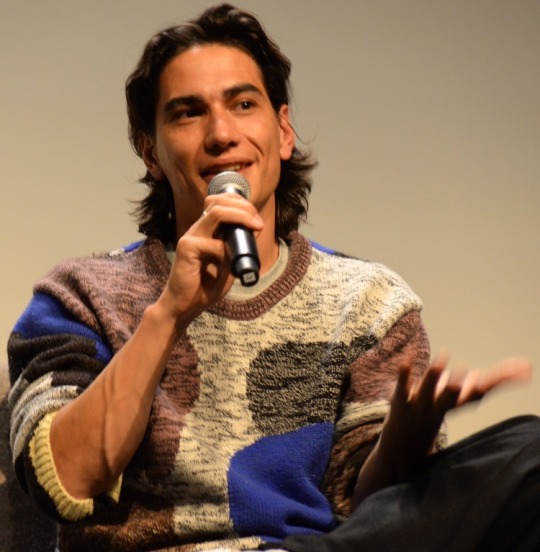
Will your life ever be quite the same after the experience of filming this movie?
Enzo Vogrincic: In life, everything you do changes you. You're never the same after an experience this informative. Of course, I’ve changed. I am different. I like to take every opportunity to continue changing myself. The biggest changes were on a professional level and in terms of how much I learned. I had to go in depth into my character and we spent one to three years with those people talking about life, death, friendship, love, family and making friends. I've made 25 new friends and therefore I like to think that I did change.
Talk about your immersion in your new extended family. The family of the living and the family of the dead.
JA Bayona: I sent an email to the survivors in 2011 and in that first email, I already sent a line about Roberto Canessa that said, “Talking to the dead, accepting peace, gives us the chance to live other lives we didn't have the chance to live.” I was very struck by that conversation between the living and the dead and that sense of depth towards the dead. The more I was in contact with the survivors and the more we talked, the more I realized that they needed the film to be completed and released even more than I did.
My big question was what was left to say after so many documentaries, books, and movies. Now I realize, after seeing the film with them, that it was not about telling something that wasn't being told yet. It was more about giving them the chance to say thank you to people who’d been so important. I see how it was like a poetic thing, the fact that people who didn't make it, they gave everything they had for these people to be alive. Now they are using their testimony to bring these people back, to keep them alive again on the screen. By doing so, I realized that they were comfortable with the story. So it was more about giving these folks a chance to say “thank you” to those who had helped while capturing the mood, feelings and context of what they had gone through so that people seeing the movie would understand what had happened.
In the hands of another director, the debate over sheer survival might not have been handled as beautifully as it was with you. There's a line in the script where Enzo’s character says, “What was once unthinkable became routine." As the black & white photos are being taken, there's a shot showing a human rib cage in the background, almost cavalierly, but it mostly was kept out of the photos. The pictures, of course, are still with us today. They're on the web for people to see. You've managed to take on such a life-and-death topic and deal with it matter-of-factly but with great respect and discretion.
JA Bayona: I'm so glad that you asked about that “unthinkable” line because that's life. That's life. First, you do what you think is impossible, then you get used to it, and then there's a moment that you don't pay attention to it. Our ordinary lives are about that. These people remind us how important every single detail is in our lives. It doesn't matter if your skin is black or white or if we’re American or Spanish. We each have our chance to live life. But when you meet these guys, you meet people who’ve been given an extra chance. That makes a big difference. Their story helps us realize that sometimes we complain and don’t appreciate what we have, the fact that we do have lives to live.
How cold did it get? At what altitude did most of the filming take place?
Enzo Vogrincic: Well, I have to admit, it was hard to tell this story. You feel you have to go through the pain yourself, in order to tell it well. The shooting was hard, obviously, because you have to connect the pain with your own body. We had to lose weight and experience the cold. You have to do it until your body becomes part of that character’s story. There were experiences that allowed us to feel the pain. We were able to work less on certain things and still retain the emotional tone of the story. The emotions didn’t take over necessarily when your body had to suffer. There were other important components, too, in addition to the pain and the suffering. You were able to see that you had a duty to carry out which took you beyond the pain, because you had a story to tell in a competent way.
JA Bayona: Let me add one story. Enzo did such an extraordinary job. He was so committed to the performance of Numa that when we finished the shoot we had to go back to the Andes because the first time we went, there had been very little snow because of global climate change. We went for one year. Once we finished the shoot, we went back to shoot again in the background. Secretly he was in Uruguay, and I called Enzo and said, “What are you doing next Wednesday?” He said, “Nothing.” I said, “I want to take you to the actual place where the plane crashed. I don't have permission from the other producers, but I think I can manage to bring you there. How much is the ticket?” He said, "$400.” I said, “Well, we can pay $400. I can talk with the insurance company and the professional drivers.”
I secretly took Enzo finally with the blessings from the other producers just because he did so much. We had this shoot then we had the person in Germany that was to do this film. I really wanted Enzo to be there and be able to shoot some shots that were very helpful for the film. You can treat the audience by putting in a couple of shots of Enzo there and there. At the same time, Enzo had a closure to that journey. He was able to do these shots but was also able to stand in front of the great theater. I don't know what you said there, what you did there, but you had your moment there. To me that was very important. When you do a film, the whole atmosphere affects the final result. I pay attention to these kinds of details. Also, I wanted him to be there and have that closure.
Having just shared this in a theater, I know that’s what movies are designed for, communal viewing experience. But when someone watches your movie on a streaming device. How does it affect you? And to be honest, can you interpret it for any language that it needs to be interpreted for?
JA Bayona: Can we take the Netflix people out of the room for a second? No, listen, we spent 10 years trying to make the financing for this film. We tried to do this film by conventional windows to the cinemas. Apparently, there is no market for Spanish films that are over $10 or $15 million in budget. We couldn't do this film with that budget. We spent 10 years and when we were about to give up, Netflix showed up and put in the money and gave us the freedom. They made the film possible.
At the same time, I come from Spain. To me, it's more difficult to handle the market in the US than in Spain. I'm quite popular there. We released the film on December 22nd. It was a limited release, 100 cinemas. Normally one of my films would be in 500 cinemas. We released the film in 100 cinemas. I decided to go with the film. Every week, I went to a different city and showed the film. The film is still in the cinemas, in the same number of cinemas. We've done 100 million admissions. The film actually is doing better since it's on Netflix. I'm very happy that Netflix made the film possible and made it accessible to the whole planet. We had 100 million people watching the film in the first 10 days. So it’s not true. There is a market for Spanish films. But I'm glad that the movie is still in theaters for people who want to see it there.
Copyright ©2024 PopEntertainment.com. All rights reserved. Posted: March 6, 2024.
Photos © 2024 Brad Balfour. All rights reserved.
youtube
14 notes
·
View notes
Text
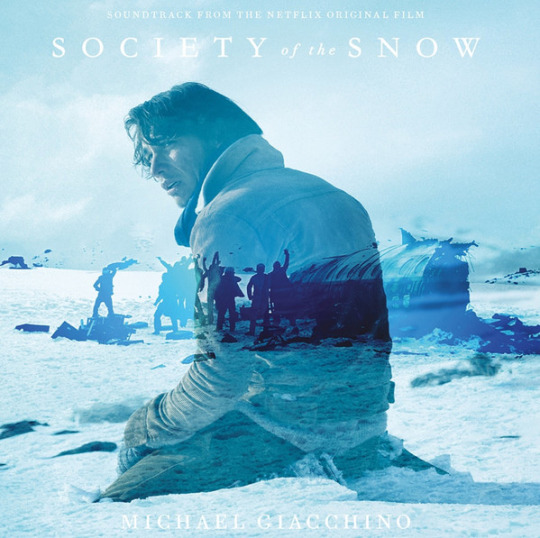
Society of the Snow ❄️
The 96th Academy Awards are upon us, with the 2024 Oscars taking place this weekend on Sunday, 10th March 2024 · Society of the Snow has been nominated for two Oscars, for Best International Feature Film, Not in the English Language as well as the best makeup and hairstyling. Society of the Snow became the third-most-prized film in Goya history after winning 12 awards at Spain's Goya Awards and winning a European Film Award but the interest is not just for the awards but for the true story behind this film/Thriller/Adventure documentary.
Directed by Juan Antonio García Bayona, the Spanish-language film is about the 1972 plane crash that stranded dozens of people–most notably players of an Uruguayan rugby team–on a glacier in the Andes. But it was Pablo Vierci’s Society of the Snow, a non-fiction account of the disaster, published in 2008 and made with the full collaboration of the survivors and their families, that caught Bayona’s interest. The film is an adaptation of Pablo Vierci’s book. The cast is composed of Uruguayan and Argentine actors, most of whom are newcomers.
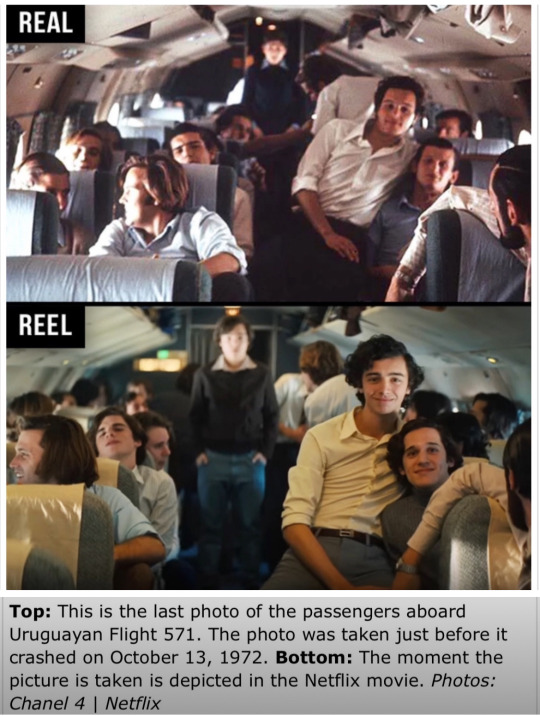
In case you have no idea about this film, please, let me explain: The rugby world knows very little about this story, so after watching the Rugby World Cup in France last year 2023 and seeing the resilience of the Uruguayan rugby team in the World Cup, I watched the film and read books getting more and more interested in the subject. The Snow Society tells the true story of Uruguayan Air Force Flight 571, a plane that crashed in the Andes in 1972, leaving a rugby team and its fans hungry and stranded for 72 days. There were 45 people on the flight, 40 passengers and 5 crew members. 19 of the passengers were members of the Old Christians Club rugby team.

Old Christians Club, or simply Old Christians, is a Uruguayan sports club from Carrasco, it is a neighbourhood of Montevideo. The club is known mostly for its rugby union team which became famous around the world due to the Uruguayan Air Force Flight 571 crash that involved the first division team of the club in 1972. Old Christians amateur rugby team charted a Uruguayan Air Force plane to transport the team's players, friends, fans and family members to Santiago, Chile, for an exhibition match.

It is Highlighted by one of the better plane crash scenes put to film in quite some time, Bayona, who also directed The Impossible (the criminally underseen survival pic about the extremely deadly 2004 tsunami), treats the audience to an immersive, detailed, and gritty look at how the young men who were eventually rescued from the icy slopes survived for nearly two months.
That's been dramatised many times before, most notably in 1993’s “Alive”, starring Ethan Hawke, but the director J. A. Bayona’s rendition may be the most immersive take yet.
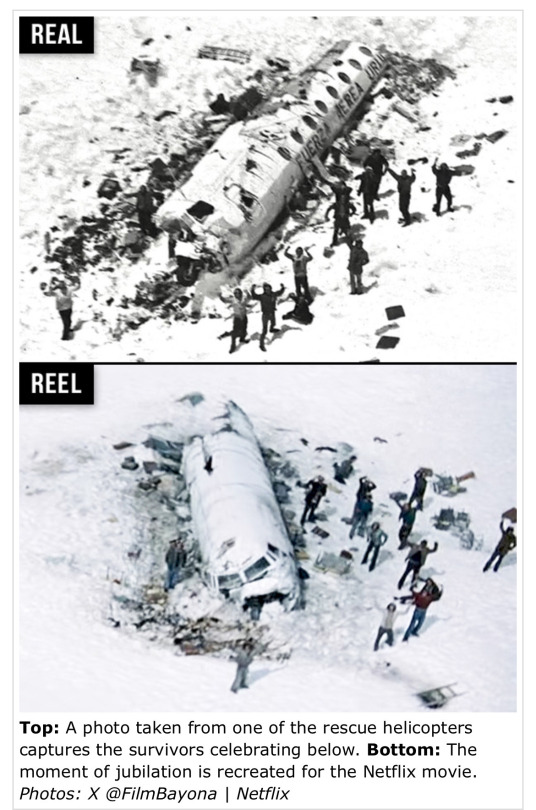
The crash scene is meticulously re-created—people being sucked out of the fuselage, bones shattering as the seats get ripped from the floor, bodies crumpling toward the cockpit. Most of the film takes place on the mountain range’s blinding snow-covered slopes, the victims’ skin bluish with frostbite, and the sound of howling winds incessantly. Almost every shot highlights the frigid, terrifying reality of what happened.
In my opinion, J.A.G. Bayona did an incredible job directing the film because I felt their stress and desperation, their fear and hope, and I feel this is one of those films that are a complete experience, one of those that makes you value everything you have and open your eyes. It’s a gruesome tale —the survivors eventually resorted to cannibalism— The survivors (and the not-lucky ones) became a life inspiration.
They wanted to live, they dreamed of living, they fought to live, they did EVERYTHING and more to achieve success, and thanks to those guts they wrote their story.

Society of the Snow is the Definitive Account of the World’s Greatest Survival Story. Waiting for a rescue team that didn't arrive, the survivors became fewer and fewer in numbers. Stranded alone on a glacier, they had to face brutal temperatures, lethal avalanches and the loss of friends and family with no access to supplies, food or water. In order to survive, they had to do the unthinkable. It wasn't until seventy-two days later that they were able to reach safety.
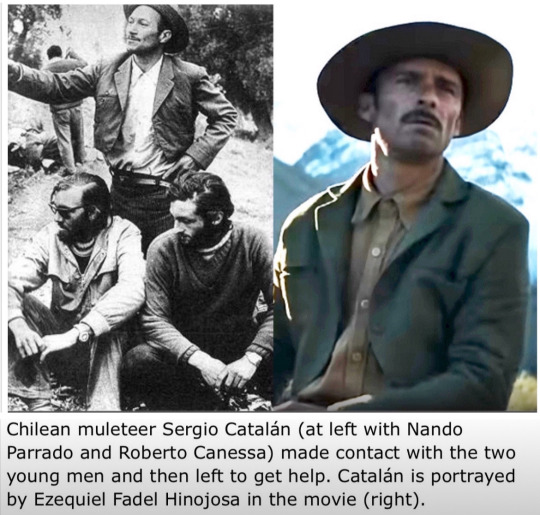
Eventually, two of the survivors – Nando Parrado and Roberto Canessa – were able to find help after embarking on an improbable hike into Chile, which took 10 days and saw them climb a 4,650-metre peak and travel 61km (37.9 miles) without any mountaineering gear.
Thanks to their efforts, the remaining team members were subsequently saved, and the incredible tale of survival became known as the Miracle of the Andes.
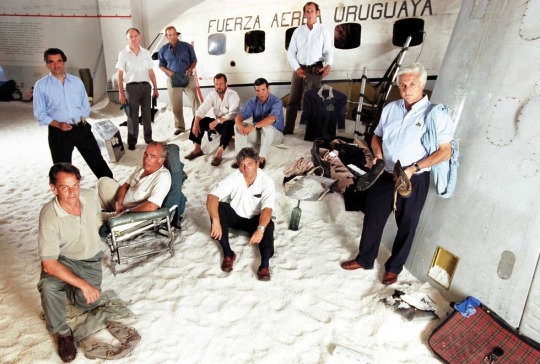
The Survivors- Sipa/Shutterstock
To increase the film’s realism, director J.A. Bayona decided to film footage at the actual crash site in the Andes, El Valle de las Lágrimas, which translates to The Valley of Tears (the name the location received after the tragedy in Chile).
The film's filming locations spanned the Catalan city of Terrassa, the rugged Sierra Nevada mountains in Spain, and the formidable Andes mountains, adding to the cinematic allure of the survival tale.
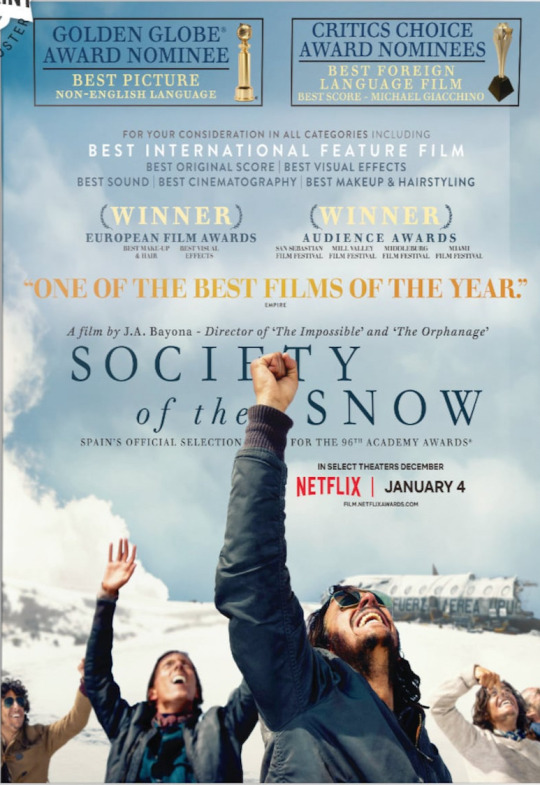
Society of the Snow appears to be a smash hit with both the critics and audiences, and is certainly one of the best Netflix films of recent times – it has a 90% Rotten Tomatoes score and 83% audience rating. If you haven't seen it yet, then I highly recommend you give it a go.
The Oscars are about to begin. The Dolby Theater in Los Angeles is already rolling out its red carpet.
youtube
#SocietyoftheSnow #JAGarcíaBayona #Director #96thAcademyAwards #Oscar #Spain #film #BestInternationalFeatureFilm #PabloVierci #Spain'sGoyaAwards #EuropeanFilmAward #Thriller #Adventure #documentary #Rugby #Uruguayanrugbyteam #Spanishlanguage#book #OldChristiansClubrugby #UruguayanAirForce #Flight57 #World’sGreatestSurvivalStory #MiracleoftheAndes
@brian-in-finance Yeah! Survivors of the Andes (1976) (Supervivientes de los Andes ) was a Mexican film directed by René Cardona, based on the 1973 book Survive! by Clay Blair, which is based on the story of Uruguayan Air Force Flight 571. The film received negative criticism, not a top budget film but still they could have put in a little more effort than what they did a very poorly done.
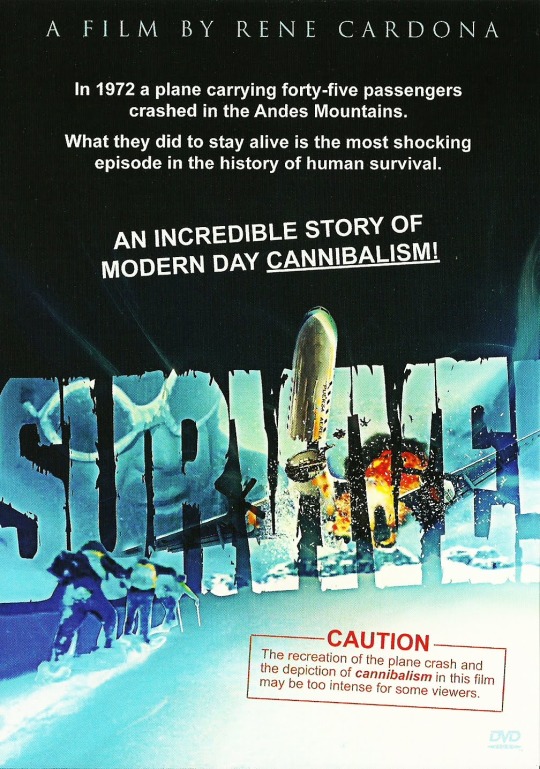
8 notes
·
View notes
Text
Libertango(classic)
youtube
A masterpiece based on the bandoneon by the Argentine composer Piazzolla. The interplay between Yo-Yo Ma's cello and bandoneon is thrilling and worth listening to. It's an undeniably great performance, no complaints. The bandoneon, representing Argentina, tends to be in short supply as tourists buy it as a souvenir from Argentina, but the bandoneon, which has a complicated structure, can only be made in Germany, and there is a risk that this instrument will run out.
リベルタンゴ(クラシック)
アルゼンチンの作曲家ピアソラによるバンドネオンを主体にした名曲。ヨーヨーマによるチェロと、バンドネオンの掛け合いがスリリングで、聴きごたえがある。間然とせぬ名演で、文句なし。アルゼンチンを代表するバンドネオンは、アルゼンチン土産として、観光客が買い求め、在庫が激減する傾向があるが、構造が複雑なバンドネオンは、ドイツでしか作れず、この楽器が払底する恐れがある。
13 notes
·
View notes
Text
207: Atahualpa Yupanqui // El hombre, el paisaje y su canción
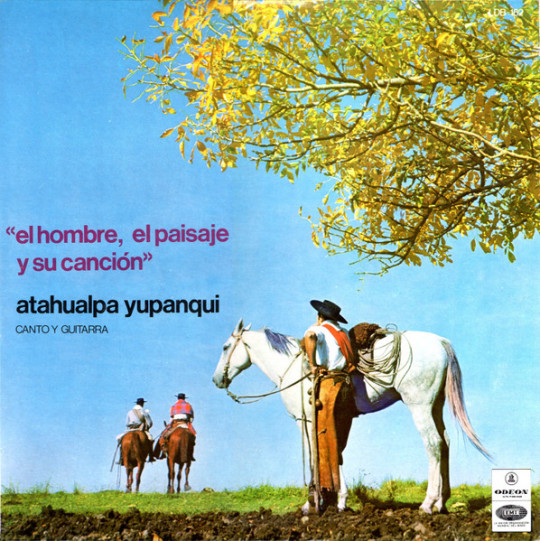
El hombre, el paisaje y su canción
Atahualpa Yupanqui
1969, Odeon
Atahualpa Yupanqui was a titanic figure in Argentine music. As an ethnomusicologist who formed a bridge between various forms of Indigenous folk music and the younger artists of the nueva canción (new song) movement; a first-rate composer; and a political revolutionary imprisoned numerous times for his beliefs, Yupanqui is a fine representative of that era of Latin American creators whose artistic quality was equaled by the courage of their convictions. Due to his Communist Party affiliation, Yupanqui didn’t record much until he was already in his 40s, which robs us of the voice of his youth, but also enforces his image as a fatherly figure, a living link with the past.
youtube
Once he started recording though, the torrent was overwhelming—between his remarkable productivity and the tendency of labels to constantly repackage his work, forging a semblance of a linear discography is beyond my skills. I’m not altogether sure of the provenance of El hombre, el paisaje y su canción (The Man, the Landscape and His Song), a 1969 record I picked up on a lark a few years back that became an instant favourite in the Wifeleft household. There was an album of the same name released the previous year that shares four tracks, suggesting my Hombre may be a compilation—on the other hand, he recorded many of his songs numerous times, so it’s possible these are from an entirely different session. The album certainly sounds as though it was recorded in one sitting.
No matter, this is my favourite of the handful of Yupanqui albums I’ve heard to date. He is presented solo, as usual, accompanied only by his own acoustic guitar, and over a scant 30 minutes or so draws the listener entirely into his world. I feel as though I am watching the master singing for a small audience gathered on his porch, his fingers translating the weariness of the day’s labours into something more somber and romantic, his voice that of a man who understands his role is to witness and recount. The lyrics often look directly at the travails of working people, as on “Trabajo, quiero trabajo” (“Work, I Want Work”) and “Campesino” (“Peasant”), but there is also that mystical element common in Spanish poetry, as on “Guitarra, dímelo tú” (“Guitar, Tell Me”):
Guitar, you tell me
Men are dead gods
Already long collapsed
Not even his dreams were saved
Only the shadow has remained
El hombre also includes a pair of instrumentals that show off the expressiveness of Yupanqui’s playing to great effect—“El llanto” (“Crying”) is as poignant as its title suggests, while “Malambo” (named for an Argentine folk dance) reminds me a bit of the American Primitive fingerstyle associated some distance north with John Fahey.
I doubt there is such a thing as a poor-quality Atahualpa Yupanqui album, and I think any collection would be enriched by his inclusion. He makes a great entry point to South American folk, some of the most timeless and impassioned music of the 20th century.
207/365
#atahualpa yupanqui#argentine folk#argentinia#andean folk#latin american music#nueva cancion#argentine music#'60s music#folk#vinyl album#music review
10 notes
·
View notes
Text

“A superb book on the only major Argentine antifascist association composed entirely of women. Attracting disenfranchised women, the Junta de la Victoria fostered a democratic alternative to fascism and politicized women in the Southern Cone. The contemporary resurgence of right-wing populist and neo-fascist groups in the Americas makes this meticulously researched study, of a relatively unknown organization of the 1940s, of particular relevance. Highly recommended.”
7 notes
·
View notes
Text

The Exhibitors Herald, June 1926
The first of the deluxe presentations was at the Forrest theatre, Philadelphia, Thursday evening. The audience was composed largely of members of the Advertising Clubs of the World, which was holding an international convention in the Quaker City, and the members of the Poor Richard Club. There were also present a large turnout of society, official and judicial life of Philadelphia.
The other audience, which included Mrs. Coolidge, members of the diplomatic corps and Washington newspapermen, as guests of the National Press club, viewed the picture at a special screening Friday night at Poli’s theatre in Washington.
General W. W. Atterbury; Senator-elect [and notorious political boss] Wm. S. Vare; Senator [and law professor] George W. Pepper; Lieut. Commander Geo. B. Wilson, U. S. Navy [not to be confused with the character from the Great Gatsby] ; Mrs. Barclay Warburton [civil rights supporter and journalist] ; Major Norman MacLeod; E. T. Stottsbury; Paul Thompson; Alexander Van Rensselaer; Mrs. Charlemagne Tower; Dr. H. J. Tily [department story owner, mason] ; Mr. and Mrs. Theodore W. Reath; Frank Smith; Mr. and Mrs. Jos. N. Snellenburg [merchant in clothing trade] ; Mr. and Mrs. Arthur Block; Mr. and Mrs. Jules E. Mastbaum [movie theater and department store magnates] ; George Nitsche [possibly an affiliate of U. Penn]; Josiah H. Penniman [Provost of U. Penn] ; J. Willis Martin [a judge]; H. S. McDevitt; John J. Monaghan.
Judge Buffington, of Pittsburgh; Thos Finletter [could be one of a a number of lawyers with this name]; Mr. and Mrs. A. L. Einstein; Maurice Paillard, French consul; Robt. Von Moschzisker [justice of the Supreme Court of Pennsylvania]; Mayor W. Freeland Kendrick; Geo. H. Elliott, director of public safety; Chas. B. Hall, president of City Council; Dr. Charles Hart; Rev. Wm. H. Fineschriber; Chas Fox, district attorney [could be a coincidence but Charles Fox III and IV are both currently lawyers in Pennsylvania]; John Fisler, president Manufacturers Club [golf afficianado]; Albert M. Greenfield [real estate broker and developer]; Jos. P. Gaffney; Mr. and Mrs. Ellis Gimbel [department store owner]; Daniel Gimbel [brother and co-owner along with Ellis]; J. D. Lit; Richard Gimbel [son of Ellis Gimble]; Benedict Gimbel [brother of Ellis and Daniel]; Colonel Robert Glendinning [banker]; Benjamin Golder [member of the Pennsylvania State House of Representatives], Agnew T. Dice [President of Reading Railroad].
Dr. Leon Elmaleh [founder of the Levantine Jews Society of Philadelphia]; H. Gilbert Cassidy [a judge]; Utley E. Crane [author of Business Law for Business Men]; Cyrus H. K. Curtis [magazine publisher]; Chas. S. Caldwell; G. W. Cole; Hampton L. Carson [lawyer, professor, state Attorney general]; A. Lincoln Acker [Philidelphia port collector]; Max Aron [lawyer]; Eugene C. Bonniwell [a judge]; Chas. L. Brown; Edward Groome; Chas. L. Bartlett; Edward Bok [editor of the Ladies Home Journal]; Mr. and Mrs. Geo. H. Lorimer [editor of the Saturday Evening Post]; Edw. Bacon; Chas. Curtis Harrison [a judge]; Samuel S. Eels, Rev. J. J. O’Hara [future Archbishop of Philadelphia], and Bishop Thos. J. Garland, D. D. [Episcopalian bishop]
There were a bunch of Universal employees in attendance too but that's less interesting to me. Let's see who went to the Washington show
Both showings were under the auspices of Ambassador Henri Beragner of France and Marcel Knecht, French publisher and trade representative.
Dr. Ferdnand Heurteur, leader of the orchestra of the Paris Opera House, came to the United States to conduct the orchestras at these two showings.
Among the distinguished guests at the Washington showing were:
Don Juan Riano, Spanish ambassador; Senor and Senora de Mathieu, Chilan ambassador; Raoul Tilmont, secretary, Belgium embassy; G. H. Thompson, second secretary, British embassy; A. J. Pack, British embassy; Eduardo Racedo and Madame Racedo, first secretary, Argentine embassy; Conrado Traverso, Argentine embassy; Dr. and Senora Velarde, Peruvian ambassador; Dr. and Madame Santiago F. Bedoya, secretary, Peruvian embassy; Senor and Senora Tellez, Mexican ambassador; Senor and Senora Castro, secretary, Mexican embassy; Ambassador de Martino, Italy; Colonel Augusto Villa, miltary attache, Italian embassy; Count and Countess Sommati di Mombello, Italian embassy; Signor Leonardo Vitetti, Italian embassy.
Baron and Baroness Ago Maltzan, German embassy; Mr. and Madame Matsuidaira, Japanese embassy; Mr. and Madame Gurgel de Amaral, Brazilian embassy; Senor and Senora de Sanchez Aballi, Cuban embassy; Senor Don Jose T. Baron, secretary, Cuban embassy; Brigadier General Georges A. L. Dumont, military attache, French embassy; Mr. Jules Henry, first secretary, French embassy; Major and Madame Georges Thenault, French embassy; Captain and Madame Willm, French embassy; Mr. A. Konow Bojsen, secretary, Danish legation; Mr. and Madame Marc Peter, Swiss ambassador; Mr. Andor de Hertelendy, Hungarian embassay; Senor and Senora Ricardo Jaimes Freyre, Bolivian embassy.
Mr. and Mrs. Timothy A. Smiddy, minister, Irish Free State; Mr. and Madame Simoposilis, Minister from Greece; Mr. and Madame Prochnik, Austrian ambassador; Mr. and Madame Charles L. Seya, Latvian embassy; Mahmoud Samy Pasha and Madame Samy Pasha, Egyptian embassy; Mr. Zdenek Fierlinger, Minister from Czechoslovakia; Mr. Simeon Radeff, Bulgarian embassy; Mr. and Madame Jan Ciechanowski, Polish minister; Senor don Manuel Zavala, Nicaragua embassy, and Mr. and Madame Bostrom, Swedish ambassador.
5 notes
·
View notes